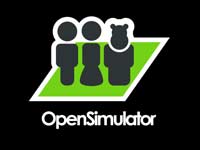Maria Korolov, Editor in Chief of Hypergrid Business, published by Trombly Ltd., a Hong Kong-based communications firm with offices in Boston, Shanghai and Mumbai, is the author of the contribution “What is the best grid ?“.
Maria Korolov is president of Trombly Ltd. Subsidiaries include the China Speakers Bureau, the largest speakers bureau for greater China, providing China experts to speak at conferences and events around the world.
One of the columnists of Hypergrid Business is Adam Frisby, head of Research and Development at DeepThinkLabs, an international company headquartered in Perth, Western Australia. Adam Frisby has been using and developing for Virtual Worlds since 1997, he is a recognized industry professional and has been influential in the development of several key virtual world technologies including OpenSimulator, OpenViewer, Xenki, libsecondlife. Adam is also a member of several Virtual World standards bodies including the Linden Lab® Architecture Working Group.
Maria Korolov says that besides the isolated virtual worlds in cyberspace like Second Life, World of Warcraft, OpenLifeGrid and others, there are a few worlds which are on the hypergrid — accessible to travelers from other worlds via hyperlinks ( hypergrid teleports). The main are OSGrid, ReactionGrid, ScienceSim, FrancoGrid and Grid4Us.
OSGrid is the place for OpenSim developers and hobbyists running regions on their home computers or on spare servers. All the cool new features get tested first at OSgrid, like voice and vehicle physics.
If you like teachers, you need to be on ReactionGrid. Intel has a conference center here. ReactionGrid runs stable, older versions of OpenSim, tested and debugged, making it good for teachers or small businesses looking for a nice, reliable place to meet with students or clients.
If you want to do experiments, or watching them done, goto ScienceSim. Check out Galileo, Einstein, Kepler and other interesting builds.
FrancoGrid is the top French-speaking grid on the hypergrid and Grid4Us is best for hanging out with Germans.
Maria Korolov concludes that the best grid is the grid you build yourself and she gives an overview about OpenSim Hosting Providers.



